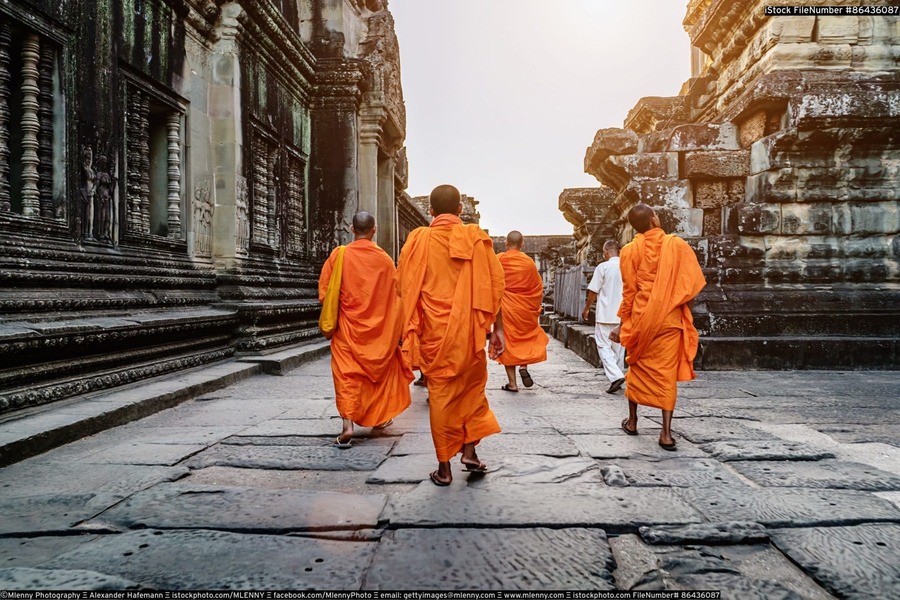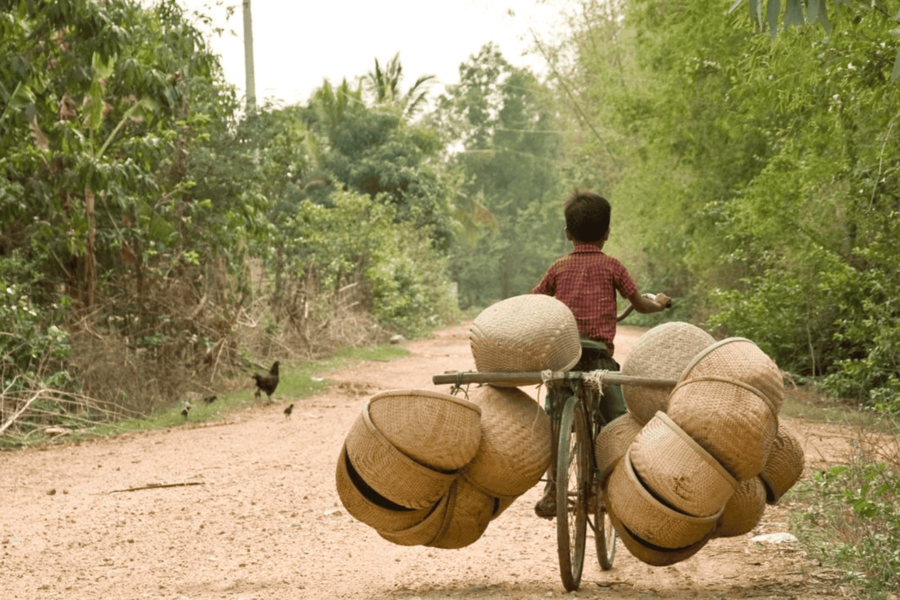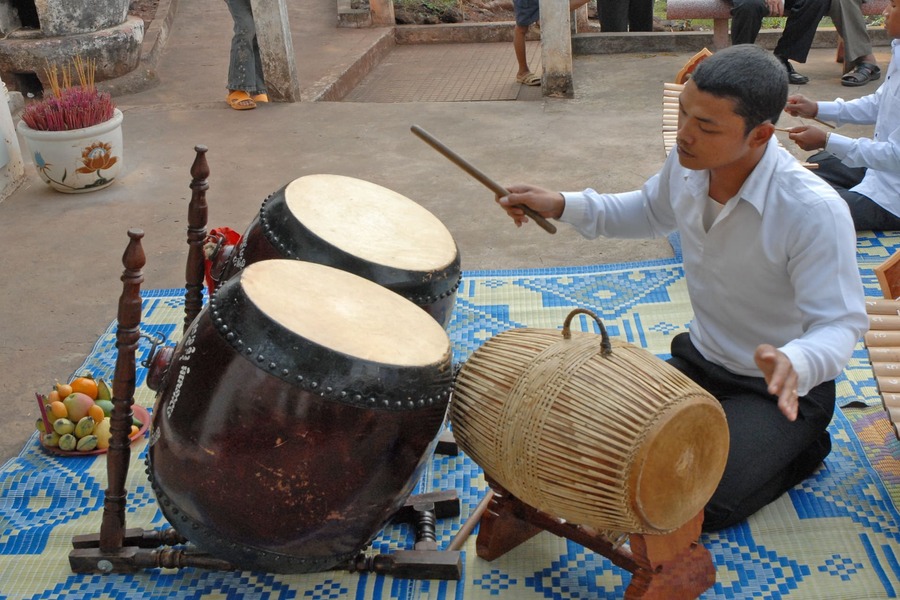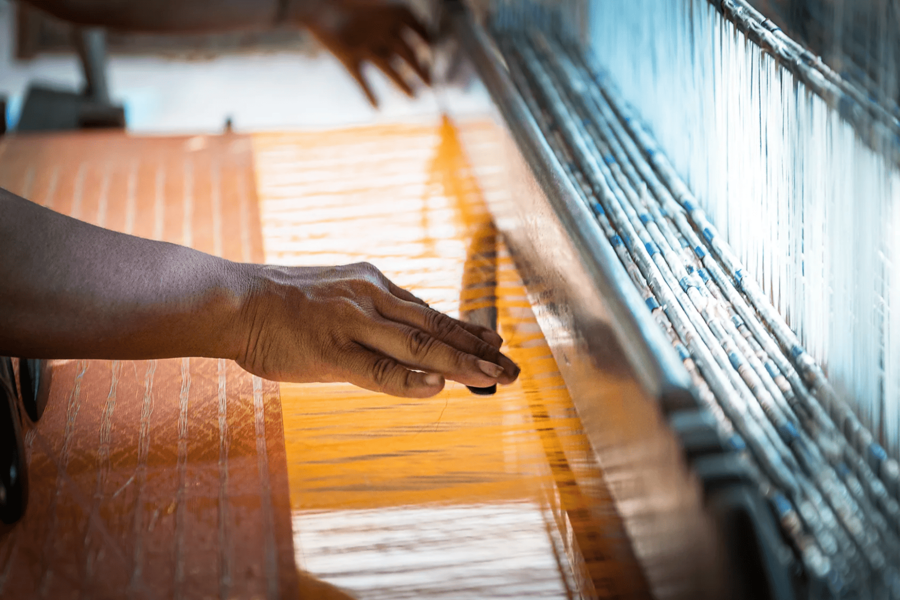To truly understand the Cambodian lifestyle, one must go beyond the temples and travel brochures. It is in the early morning rituals, the gentle rhythms of village life, and the graceful resilience of its people that you find the soul of Cambodia. Balancing Khmer traditions with the quiet evolution of modernity, daily life in Cambodia offers a deeply human story – one where ancient values and modern dreams quietly coexist. Here in your Vietnam and Cambodia tour package, you don’t just visit; you feel, you connect, and if you’re open enough, you change.
1. Unveiling the Cambodian Lifestyle – A Blend of Tradition and Today
1.1. Morning Vibes – Rituals That Kickstart the Day
In Cambodia, dawn is not just the start of a new day – it is a spiritual gateway. As sunlight spills over rice fields and city rooftops, the country begins to breathe with a rhythm centuries old. The Cambodian daily routine starts early, especially in more traditional households. You’ll hear the soft footsteps of elders preparing food offerings, the melodic chants from nearby pagodas, and the quiet clatter of street vendors setting up their carts.

Offering alms to monks is a daily ritual imbued with humility and merit-making, a clear expression of Khmer traditions. For many locals, the act is not religious duty alone – it’s a moment of personal reflection, a chance to honor ancestors, and a way to begin the day with grace.
Meanwhile, the street awakens with the smell of freshly grilled skewers and steaming bowls of num banh chok – a beloved breakfast dish. This early morning harmony is a profound part of daily life in Cambodia, and to be present in it is to witness how spirituality and simplicity form the core of local culture Cambodia.
1.2. The Hustle – Work and Play in Cambodian Life
As the sun climbs higher, the pace of life picks up, yet never feels rushed. This is the beauty of the Cambodian lifestyle – its inherent balance between effort and ease. In both cities and countryside, people work with quiet determination, often in professions tied deeply to land, tradition, or family.
In rural villages, children help in the fields before heading to school, and artisans continue crafts passed down through generations. In towns, you’ll find a vibrant mosaic of motorbike drivers, shopkeepers, and farmers bringing fresh produce to market. These daily acts of livelihood reflect the resilience of rural life Cambodia, where work is more than survival – it is identity.
But work is never the full story. Evenings often bring volleyball games in dusty alleys, shared meals under starlit skies, or a spontaneous dance at a family gathering. Leisure here is not an escape, but an extension of life itself – woven into the daily rhythm, connecting generations, strengthening community.
2. Rural Life in Cambodia: The Soul of the Nation
If cities are Cambodia’s face to the world, then its countryside is the heartbeat. Rural life Cambodia is where time slows down, where values are deep-rooted, and where the past gently breathes into the present. In these vast stretches of rice paddies and palm-fringed villages, the Cambodian lifestyle shines in its most authentic form – grounded in family, land, and tradition. It’s a world where the daily life in Cambodia unfolds in harmony with the sun and soil, and every gesture speaks of a profound connection to nature and community.
2.1. Rice and Resilience – The Backbone of Rural Cambodia
Rice is more than just food in Cambodia – it is culture, identity, and survival. In rural provinces, entire families rise with the sun to work in the paddies. Planting, harvesting, and irrigating the fields are rituals passed down through generations, symbolizing the very essence of rural life Cambodia.
This life is not always easy. Droughts, floods, and economic challenges test the limits of those who depend on the land. Yet, there is a quiet, unshakeable strength in these communities. The resilience of the Khmer farmer is legendary – shaped by history, fueled by faith, and bound by tradition. Through it all, rice remains a symbol of both sustenance and spirit, a sacred crop tied to Khmer traditions and seasonal ceremonies.
2.2. Village Connections – Where Everyone Knows Your Name
Villages in Cambodia are not merely physical spaces; they are living, breathing communities. The heart of Cambodian daily routine in rural areas lies in connection – between neighbors, generations, and the spiritual world. People greet each other with familiarity and warmth; there’s a deep-rooted respect for elders and a sense of duty to the community.
Here, traditions are not observed out of obligation, but out of love. From preparing meals for communal feasts to gathering at the temple during full moon nights, local culture Cambodia is shared, not showcased. It’s in the way a mother teaches her daughter to weave silk, or a grandfather tells stories of the war – oral history as education, woven into daily chores and quiet evenings.
2.3. Simple Pleasures – Finding Joy in the Everyday
Life in the Cambodian countryside may be simple, but it is never lacking. The absence of luxury reveals a different kind of richness – one found in laughter, in shared meals, in moments of stillness. Children play with handmade toys, elders sip tea under stilted homes, and sunsets are watched in reverent silence.

These moments are the heartbeat of daily life in Cambodia, where happiness isn’t found in things but in being present. Cambodian lifestyle in the countryside reminds us of life’s essentials – connection, purpose, and peace.
3. Local Culture in Cambodia: Immersing in Khmer Traditions
To truly understand the Cambodian lifestyle, you must immerse yourself in the heartbeat of its culture – not just observe it. From ancient rituals to modern reinterpretations of art and belief, the local culture Cambodia is deeply intertwined with the Khmer traditions that have weathered centuries of change and conflict.
3.1. Art That Speaks – Cambodia’s Creative Heritage
Cambodia’s artistic traditions are more than aesthetic – they are sacred storytelling. The intricate carvings of Angkor Wat, the gentle sway of the Apsara dancers, and the rhythmic beat of. Skor Thom drums all embody a worldview that balances myth, memory, and spiritual devotion.

Many of these forms were nearly lost during Cambodia’s darkest decades, but the revival of the arts has become a symbol of resilience. Today, students at art schools in Siem Reap and Battambang are not only learning traditional painting or sculpture – they are carrying forward the soul of Khmer traditions.

Art here is not for decoration, but for remembrance, ceremony, and sometimes, healing. Whether it’s a silk weaver in Takeo or a puppeteer in Phnom Penh, creativity is a form of prayer – part of the Cambodian daily routine, and an inseparable aspect of local culture Cambodia.
3.2. Festivals That Unite – The Heartbeat of Cambodian Culture
In Cambodia, festivals are not simply events – they are lifelines. Rooted in religion, agriculture, and ancestral reverence, these celebrations form the spiritual and social core of the Cambodian lifestyle. They mark transitions in the seasons and cycles of life, blending joy with deep cultural meaning.
Take Chôl Chnăm Thmây (Khmer New Year), for instance. It’s a time when cities quiet down, and the countryside bursts into color. Families clean homes, visit temples, and engage in water fights – playful but spiritually symbolic, representing cleansing and renewal. Then there’s Pchum Ben, a 15-day ceremony for honoring the ancestors, where people visit pagodas and offer food to wandering souls.
These are not performances for tourists. They are real, raw, and deeply felt. Participating even in the smallest way offers a window into how Khmer traditions shape the rhythms of daily life in Cambodia – binding families and communities through shared memory and belief.
4. Cambodian Daily Routine: Living Like a Local
4.1. Food as a Daily Celebration
In Cambodia, food is never just food – it is memory, connection, and gratitude served on a plate. A typical day begins with num banh chok or sticky rice with beans wrapped in banana leaves – not fast food, but slow nourishment made with care.
Meals are a cornerstone of daily life in Cambodia, often shared communally, whether in urban homes or under a thatched roof in the countryside. Cooking is rarely rushed. Ingredients are chosen for freshness, flavors are balanced intuitively, and recipes are inherited rather than written down.
Every meal is an occasion – a moment to gather, reflect, and celebrate the simple act of being together. In this way, food expresses the heart of the Cambodian lifestyle and embodies the warmth of local culture Cambodia.
4.2. Evening Rhythms in the Khmer Way
As the day winds down, Cambodia softens. The air cools, children play barefoot in courtyards, and golden light casts a glow over temples and trees. The evenings are sacred in their stillness.
In villages, families light incense and offer prayers. In cities, neighbors gather for quiet conversations, laughter, or karaoke. The bustle of the day gives way to a slower, more reflective rhythm – a true hallmark of the Cambodian daily routine.
Spirituality flows gently through these moments. It’s not always visible, but it’s deeply felt. The daily rituals, the pacing, the sense of respect for time and one another – all are quiet expressions of Khmer traditions that influence everything from rest to reflection.
Tips for Travelers to Blend In
To truly live the Cambodian lifestyle, visitors must slow down – in body, in thought, and in spirit. Begin your day early, dress modestly, and approach with curiosity rather than expectation.
Learn simple Khmer greetings like “Susadei” (hello) and “Arkun” (thank you). Participate in temple etiquette: remove your shoes, bow slightly, and never point your feet toward sacred images. Even in casual settings, humility and kindness go far.
In rural areas, accept invitations – whether for tea or a village wedding. These moments are doors to understanding rural life Cambodia and experiencing local culture Cambodia not as an outsider, but as a guest.

0 Comment